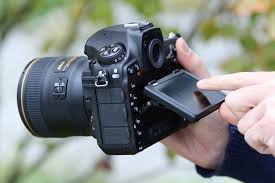The latest developments in cooled mercury cadmium telluride (MCT or Hecate) infrared sensor modern technology make probable the growth of top rated infrared cameras to use in numerous types of strenuous thermal imaging applications. These infra-red digital cameras are now available with spectral sensitivity from the shortwave, middle-influx and very long-influx spectral bands or alternatively in 2 rings. Additionally, various camera promises can be found because of middle-sizing and huge-dimension detector arrays as well as other pixel measurements. Also, camera features now involve higher body rate imaging, changeable coverage some time and occasion triggering permitting the capture of temporal energy occasions. Innovative finalizing sets of rules can be purchased that result in an expanded dynamic range to prevent saturation and optimize awareness. These infra-red camcorders may be adjusted in order that the output electronic values correspond to item temperatures. Low-consistency correction algorithms are included that are self-sufficient of exposure time. These overall performance capabilities and video camera capabilities enable a variety of thermal imaging programs which were formerly not possible.

At the heart from the high speed infra-red digital camera is actually a cooled MCT detector which provides remarkable sensitivity and versatility for viewing high speed energy occasions. As a result of accessibility of various fringe projection, high speed infra-red cameras have been made to operate in many unique spectral rings. The spectral music band can be controlled by different the alloy structure from the Hecate along with the detector set-point temperatures. The end result is actually a individual band infra-red detector with remarkable quantum efficiency (typically earlier mentioned 70 ) and signal-to-noise proportion able to find really modest quantities of infra-red transmission. Solitary-group MCT detectors normally slip within the five nominal spectral bands shown.
Along with camcorders that make use of monospectral c mount lens that have a spectral answer in one music group, new methods are increasingly being designed that use infrared sensors who have a reaction in just two bands (generally known as two coloration or twin music band). Examples include video cameras having a MWIR/LWIR response addressing equally 3-5 micron and 7-11 micron, or otherwise specific SWIR and MWIR groups, as well as two MW sub-rings.
